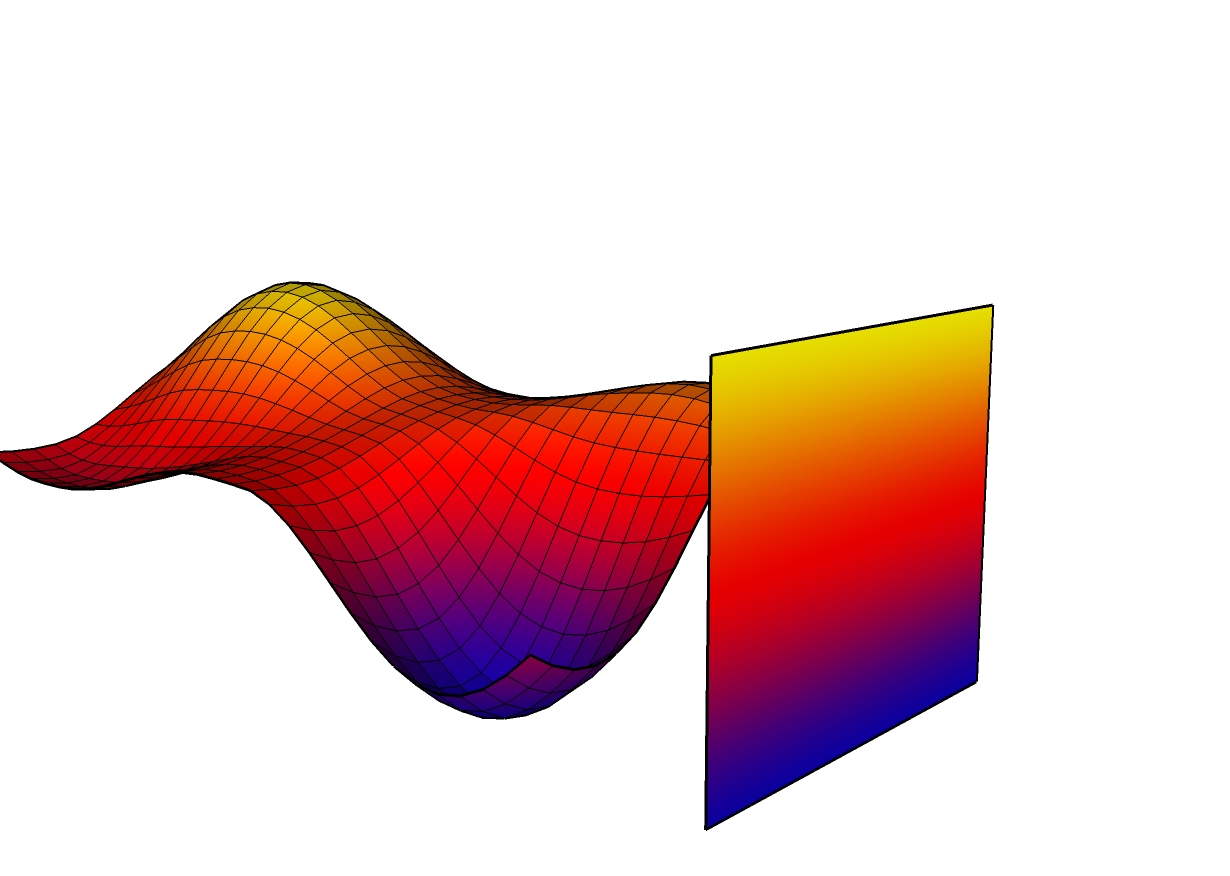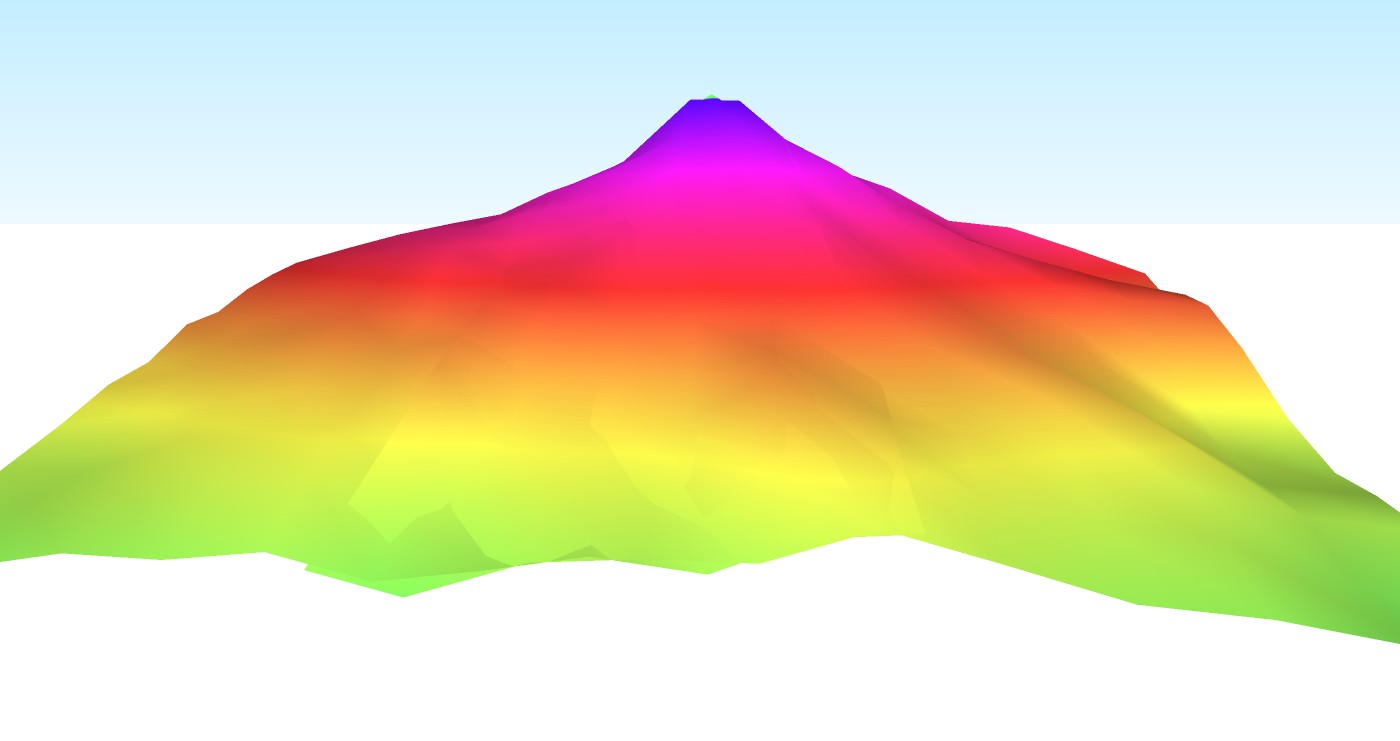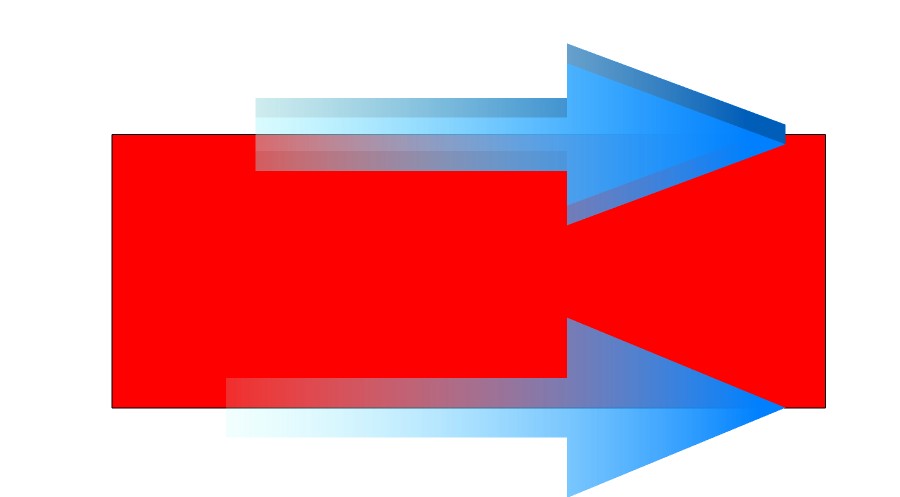[Plugin] Color by Z (Updated August 27th, 2009)
-
I still don't get a smooth gradient.

-
The way to get a smooth gradient is to make a material in photoshop that is a big smooth gradient. Then bring it into your model and turn it so it is standing vertical next to your model. Set it to "Projected". THen select all of the land for it to be applied to and apply it to your model. You'll get all faces nicely mapped with a single image.
I just don't know how to do all that in one clean ruby unfortunately. So painting each face its own material is the closest I can get for now


And with the combine textures bit....theres a HUGE downside to that. While it works great in that video I did, it only works on planar faces. So to get it to work on something like this, I would need to create a flat version of my terrain mesh, then apply all my materials to it, then run combine textures, then re-apply the new textuire onto my non-flattened terrain. So thats not terribly smooth either.
But it is what it is. Hopefully this script will be helpful for someone

Chris
-
The script idea I played with was to apply different colors based on slope and the side projected gradient doesnt work for that.

Texturing is another area in SU we could wish for improvements in. -
Ahh, tis true! If you wanted to do slopes as gradients, then you're out of luck. The only possible workaround I can think of is to use the subdivide scrip to subdivide faces into a tone of smaller faces. Then apply a single color to each face. Then somehow turn the whole thing into a single material and re-apply it to the pre-subdivided mesh. But I have a feeling that is 1. beyond the scope of Ruby and 2. probably just not very efficient and would be better suited for another 3d modeler? Maybe someone like Al's team could write an entirely separate app that reads the SU model and does all that work with the UV and gradients, and then sticks the model back into SU.
Chris
-
Hi Chris, again.
Other ideas:
- enable the script to "remember" the settings last used during the same SU session.
- save the settings in to a library (each "style" would be saved a record in a text file).
- call up the color wheel dialog
And OMG, is Mt Hood going following in the foot steps of Mt St. Helens?

EDIT: 14 Feb 09
Here is the skp , Chris. It may be that I didn't input the same values for the two terrains. It is geolocated, it will take you back to Mt. Hood in GE.
-
Chris, .skp was added to my previous posting.
-
Cool, thanks John. I see it now. There is some overlapping geometry that I couldn't see in the image. That accounts for the coloration working the way it is. Thanks John!
Chris
-
maybe a better direction for this would be to create a plug that creates 'real' gradient textures based on the height of geo in a scene. they could then be projected manually or auto matically based on a plane that is created with a similiar prcess to a section plane?
-
THats a nice arrow their John. It took me a while to find it on the image, but once I clicked on the image to expand it, it all made sense. Very nice. And your mountain looks great too! It works out really nice with white at the top that changes quickly into a brown and works its way down to give a nice snow capped mountain appearance

Chris
-
@daniel s said:
SU7 has an option called Combine Textures (The Combine Textures menu item combines separate textures on adjacent co-planar faces into a single larger texture. This feature also, optionally, removes edges between co-planar faces to reduce the polygon count for the model as a whole. Context-click on multiple selected parallel faces, with at least one face having a texture, and select Combine Textures to create a texture which is unique to that set of faces.)
This is a great tool, but it will be more usefull if it`s extended into curved surfaces. This Color by Z or the Tools On Surface are examples of plugins that will be benefit.Daniel S
how can you get to this tool? i can't find it, tried RC menu?
-
Here's a video on using combine textures.
[flash=727,635:2s0w7uxd]http://www.chrisfullmer.com/chrisfullmer/forums/combine_textures.swf[/flash:2s0w7uxd]
Chris
-
thats sweet. thank you very much for that. coincidentally you just answer a another question, i was trying to figure out how to make a painted wall texture for skindigo, but i couldn't figure out how get SK to UV map surfaces with just white material on it so i could apply displacement. now after watching your vid i figure i can just make unique my material then it should be uv'ed.
thank you
-
Good idea Chris, thanks
-
...nice idea Chris!


-
-
It never occurred to me to project a gradient color onto a terrain, great idea.

However, I do project gradient transparency along with gradient color onto a single surface to make arrow-shaped objects and "swooshes" that indicate direction or motion.

Mt Hood gone Active Vulcanic AGAIN 2.skp
-
Solo, was that made with the plugin or with the image gradient method?
Chris
-
Hi Chris and all,
I haven't been able to drop by the Ruby Dept for days so I might be a bit late... Do you know however Didier's "paint_altitude_faces.rb" by any chance? It works kind of similar (only with the gradients of the same colour):
http://www.crai.archi.fr/RubyLibraryDepot/Ruby/em_ren_page.htm
There's also a demonstration video supplied.All in all, yours is a very cool plugin with this texture gradient!

-
Yeah, I have a tendency to not look around to see if similar scripts exist before starting one (I think there were already about 4 version of a random pushpull script before I wrote mine, for example). Mostly because I'm still just writing these for the experience and they each teach me a new little portion of the Ruby SketchUp API. But I definitely need to watch out for that before I embark on any seriously large and in-depth projects I suppose!
So I tried to check his out, and its only painting black faces on my model regardless of what color I select. I suppose it might be a units thing? but I changed my model units to metric with no luck. Also the avi file wouldn't play for me so I couldn't see it in action. I even tried playing it with mPlayer, which generally plays anything you throw at it. But that didn't work. It came out all garbled.
Chris
-
@chris fullmer said:
So I tried to check his out, and its only painting black faces on my model regardless of what color I select. I suppose it might be a units thing? but I changed my model units to metric with no luck. Also the avi file wouldn't play for me so I couldn't see it in action.
Ditto.
Advertisement








